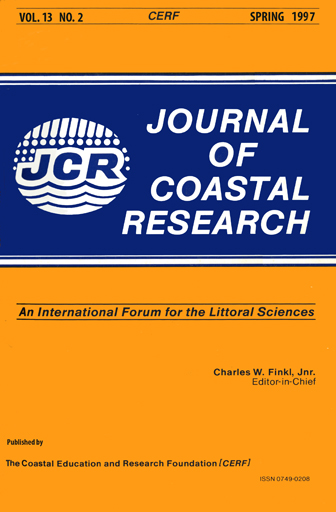Rates of Vegetation Succession on a Coastal Dune System in Northwest Florida
Keywords:
Barrier island, aerial photography, dune ridges, halophytes, coastal vegetationAbstract
Maps (1869, 1934) and aerial photographs (1953-1986) permit the dating of dune ridges on the Shell-Crooked Island barrier system, 25 km east of Panama City, Florida. Sampling of topography and vegetation along eight transects across these barrier islands allow a replacement sequence of dominant species on ridges and swales over the past 100+ yrs to be inferred. Once a foredune ridge is protected by a more seaward ridge, Uniola paniculata is replaced by another grass, Schizachyrium maritimum, within 2-17 yrs; the latter is replaced by the subshrub, Chrysoma pauciflosculosa, within 19-52 yrs; and this species in turn is replaced by the shrub, Ceratiola ericoides, within 53-117 yrs. In swales, the halophytes, Fimbristylis castanea and Paspalum distichum, are replaced by Eragrostis elliottii within 4 to 7 yrs after the beach tidepool is protected by a seaward dune ridge; Eragrostis is replaced by either Andropogon virginicus within 7 to 52 yrs, or by Muhlenbergia capillaris within 14 to 52 yrs. Development of swale vegetation over time is less predictable than is the vegetation sequence on ridges.


